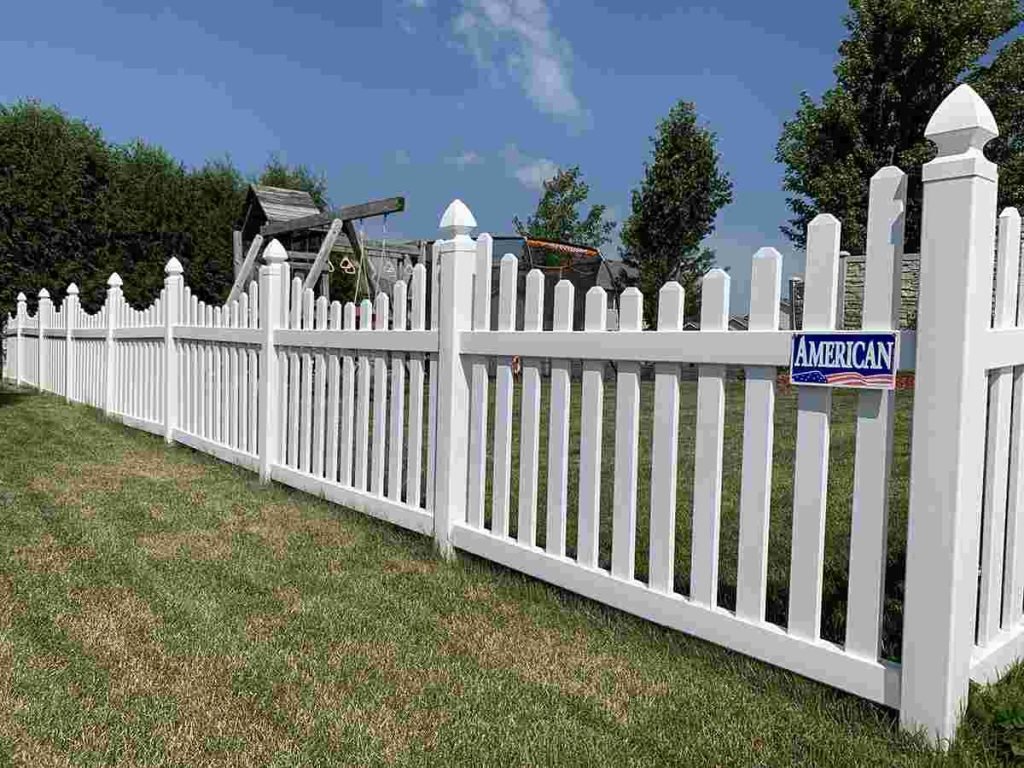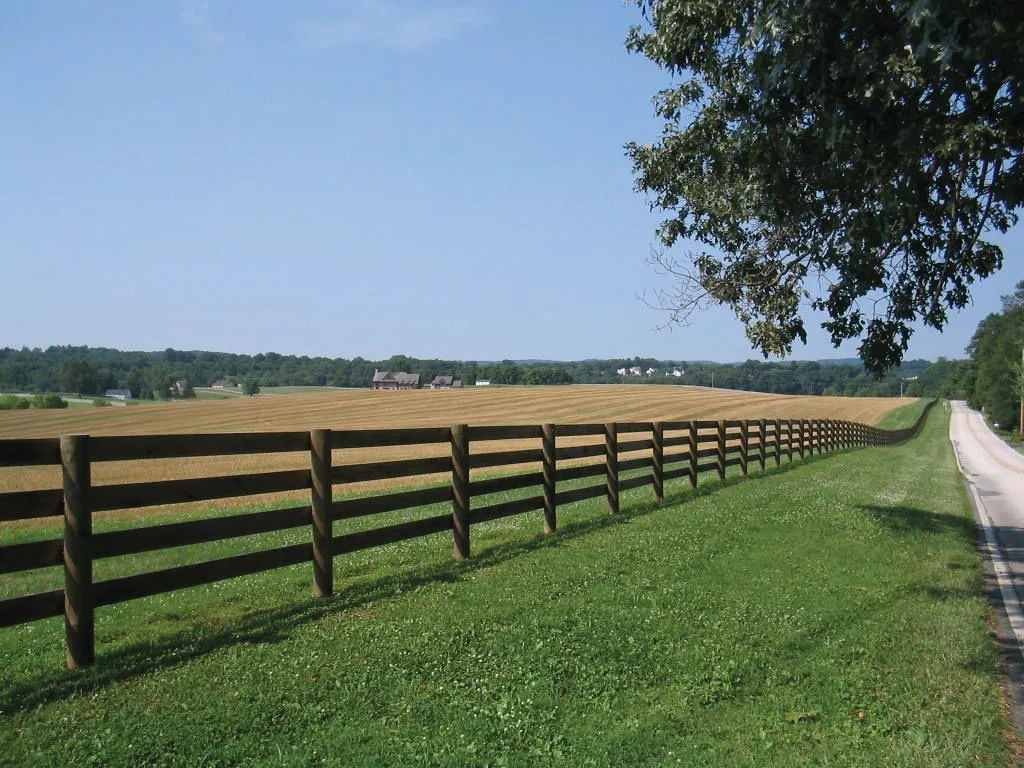Fencing is more than just a physical barrier; it’s a multifaceted element that contributes to security, privacy, aesthetics, and functionality in various settings. From residential properties seeking safety and seclusion to commercial spaces aiming for boundary definition and visual appeal, the importance of fencing is undeniable. Choosing the right fencing materials, considering environmental impacts, and incorporating innovative design features are essential aspects. Moreover, factors like soundproofing, safety considerations for children and pets, and the integration of smart technologies highlight the evolving landscape of fencing solutions. In this blog, BK’S Remodeling & Construction LLC help you to understanding these aspects empowers property owners to make informed decisions and create customized fencing solutions that meet their specific needs and preferences.
1. The Importance of Fencing
Fencing plays a crucial role in enhancing security and privacy for residential, commercial, and agricultural properties. For homeowners, a well-constructed fence not only defines their property boundaries but also creates a safe and secluded space for outdoor activities. It acts as a deterrent to potential intruders, safeguarding homes and belongings. In commercial settings, fencing contributes to perimeter security, protecting valuable assets and inventory. Agricultural fencing is essential for livestock containment, preventing animals from wandering off and ensuring efficient management of grazing areas.
Moreover, fencing adds aesthetic value to properties by complementing landscaping and architectural styles. It can be customized with decorative elements, such as lattice panels or ornamental post caps, to enhance curb appeal. In urban areas, fences contribute to noise reduction and create a barrier against traffic or neighboring activities, promoting a peaceful environment.
2. Different Types of Fencing Materials
In fence installation project consider wood fencing remains a popular choice due to its natural beauty and versatility. Cedar and redwood are durable options that resist decay and insect damage. Pressure-treated pine offers affordability with enhanced resistance to rotting and moisture. Vinyl fencing, available in various styles and colors, is virtually maintenance-free, requiring only occasional cleaning. Metal fencing options include sturdy wrought iron, known for its elegance and strength, and lightweight aluminum, which is rust-resistant and ideal for coastal areas.
Chain-link fencing, although less decorative, is budget-friendly and provides durability for securing large areas like sports fields, construction sites, or industrial facilities. Bamboo fencing offers a sustainable and eco-friendly alternative, creating a tropical or Zen-inspired ambiance. Each material has unique characteristics, costs, and maintenance requirements, allowing property owners to choose based on their priorities and preferences.
3. Factors Influencing Fencing Costs
Several factors contribute to the overall cost of fencing, including material selection, fence length and height, labor expenses, site preparation, and additional features like gates or custom designs. Premium materials such as wrought iron or exotic hardwoods incur higher upfront costs but may require less maintenance over time. Longer fences or those installed on uneven terrain may require more materials and labor, increasing the overall project cost.
Local market conditions, including availability of materials and competition among contractors, can also influence pricing. Permits and regulatory requirements, such as zoning restrictions or historic district guidelines, may add to the project’s expenses. Property owners should obtain multiple quotes, consider long-term maintenance costs, and prioritize their fencing goals to create a budget-conscious plan.
4. Choosing the Right Fence for Your Property
Selecting the right fence style involves assessing various factors, including desired functionality, architectural style, maintenance preferences, and budget constraints. For security-focused properties, sturdy materials like steel or aluminum with limited visibility may be preferred. Privacy fences, such as wood panels or vinyl slats, offer seclusion while enhancing outdoor living spaces.
Incorporating aesthetics, homeowners can choose decorative fencing options like ornamental metal designs or custom woodwork that complements the property’s overall look. Climate considerations also play a role, with weather-resistant materials like vinyl or composite fencing suitable for humid or coastal regions. Collaborating with experienced fencing professionals helps evaluate these factors and create a tailored solution that meets both practical and aesthetic needs.

5. Hiring Professional Fence Installation Services
Opting for professional fence installation ensures quality workmanship, adherence to safety standards, and efficient project management. Experienced contractors have the skills to handle various fencing materials and techniques, ensuring precise measurements, proper alignment, and durable construction. They can also navigate local regulations, obtain necessary permits, and address any site-specific challenges, such as terrain variations or utility line locations.
Professional installers offer valuable insights during the planning stage, helping property owners select the most suitable fencing options based on their goals and budget. They prioritize safety protocols, minimize disruptions to daily activities, and provide post-installation support, including maintenance guidelines and warranty coverage. Investing in professional fence installation services ensures long-term satisfaction and peace of mind regarding the performance and durability of the fence.
6. Maintenance and Care Tips for Fencing
Regular maintenance is key to preserving the appearance and functionality of fencing materials. For wood fences, annual inspections for signs of rot, insect damage, or loose boards are recommended. Applying a protective sealant or stain every few years helps prevent moisture absorption and UV damage, prolonging the wood’s lifespan.
Vinyl fencing requires minimal maintenance but benefits from occasional cleaning with soap and water to remove dirt and debris. Metal fences should be inspected for rust or corrosion, with rust-resistant coatings applied as needed. Trimming vegetation along the fence line prevents overgrowth and potential damage from roots or branches.
By following these maintenance tips and addressing issues promptly, property owners can maximize the longevity and performance of their fencing investment, preserving its functionality and appeal for years to come.
7. Environmental Impact of Fencing Materials
The choice of fencing materials can have significant environmental implications. Sustainable options such as bamboo, recycled plastic, or composite materials made from recycled wood fibers and plastic offer eco-friendly alternatives to traditional wood or metal fencing. These materials reduce the demand for virgin resources, minimize waste, and contribute to lower carbon footprints.
Additionally, selecting locally sourced materials reduces transportation emissions and supports regional economies. Eco-conscious property owners can further enhance sustainability by choosing durable materials that require minimal maintenance and have long lifespans, reducing the need for frequent replacements and associated resource consumption.
8. Customization and Design Options
Fencing serves not only functional but also aesthetic purposes, allowing property owners to personalize their outdoor spaces. Customization options include choosing from various styles such as picket fences, privacy panels, lattice designs, or decorative wrought iron. Color options for vinyl or painted wood fences enable coordination with existing landscaping or architectural elements.
Innovative design features like curved panels, scalloped edges, or ornamental post caps add visual interest and elevate the overall appearance of the fence. Collaborating with designers or utilizing online visualization tools helps homeowners explore creative possibilities and create a customized fencing solution that reflects their unique style and preferences.

9. Soundproofing and Noise Reduction
Fencing can play a role in soundproofing outdoor spaces, especially in urban or high-traffic areas. Solid barriers like vinyl or composite privacy fences effectively block noise from neighboring properties or busy streets, creating quieter and more peaceful environments. Strategic placement of acoustic panels or specialized sound-dampening materials within the fence structure further enhances soundproofing capabilities.
For commercial properties or outdoor venues, soundproof fencing systems with integrated technologies such as sound-absorbing materials, sound baffles, or noise barriers offer comprehensive solutions to minimize sound transmission and improve acoustics. Property owners can consult with acoustic engineers or fencing specialists to design and install effective soundproofing solutions tailored to their specific needs.
10. Safety Considerations and Child/Pet-Friendly Features
Fencing plays a vital role in creating safe and secure environments for children and pets. Child-friendly features include smooth, splinter-free materials, rounded edges, and secure gate mechanisms with childproof latches. Pool fencing, compliant with safety standards and local regulations, prevents unauthorized access and reduces the risk of drowning accidents.
Pet-friendly fencing options include designs with small gaps or solid panels to prevent pets from escaping, along with secure gates and fences tall enough to deter jumping or climbing. Invisible fencing systems using electronic collars provide containment for pets without obstructing views or altering property aesthetics. Property owners should prioritize safety considerations when selecting fencing materials and designs, especially in areas frequented by children or pets.
11. Smart Fencing Technologies
Advancements in technology have led to the development of smart fencing solutions that enhance security, convenience, and energy efficiency. Smart fence systems integrate sensors, cameras, and connectivity features to monitor perimeter activity, detect intrusions, and send alerts to property owners or security services. These systems can be integrated with existing home automation platforms for seamless control and monitoring.
Remote access capabilities allow property owners to manage gate operations, access permissions, and security settings from mobile devices or computers. Energy-efficient features such as solar-powered lighting or motion-activated sensors contribute to sustainable operations and reduce electricity costs. Investing in smart fencing technologies provides enhanced security functionalities and peace of mind for property owners, especially in high-risk or remote locations.
12. Legal and Regulatory Compliance
Before installing a fence, property owners must consider legal and regulatory requirements that may affect the design, placement, and height of the structure. Zoning ordinances, homeowners’ association (HOA) guidelines, historic district regulations, and property line setbacks dictate fencing parameters and allowable materials. Permits or approvals from local authorities may be necessary, particularly for fences exceeding certain heights or located near easements or public rights-of-way.
Compliance with building codes ensures structural integrity, safety standards, and adherence to property boundaries. Property owners should consult with fencing professionals or regulatory agencies to navigate these requirements and obtain necessary permissions before proceeding with fence installation. Understanding legal considerations helps avoid potential conflicts, fines, or delays in completing fencing projects.
Conclusion:
In conclusion, fencing plays a pivotal role in enhancing security, privacy, aesthetics, and functionality across residential, commercial, and agricultural properties. By exploring different fencing materials, considering environmental impacts, and embracing customization and innovation, property owners can create tailored solutions that meet their unique needs and preferences. Soundproofing options, safety considerations for children and pets, and the integration of smart technologies further elevate the value and versatility of fencing systems. Adhering to legal and regulatory compliance ensures not only structural integrity but also a harmonious relationship with surrounding communities. Ultimately, investing in well-designed and properly maintained fencing enhances property value, safety, and overall satisfaction for years to come.
